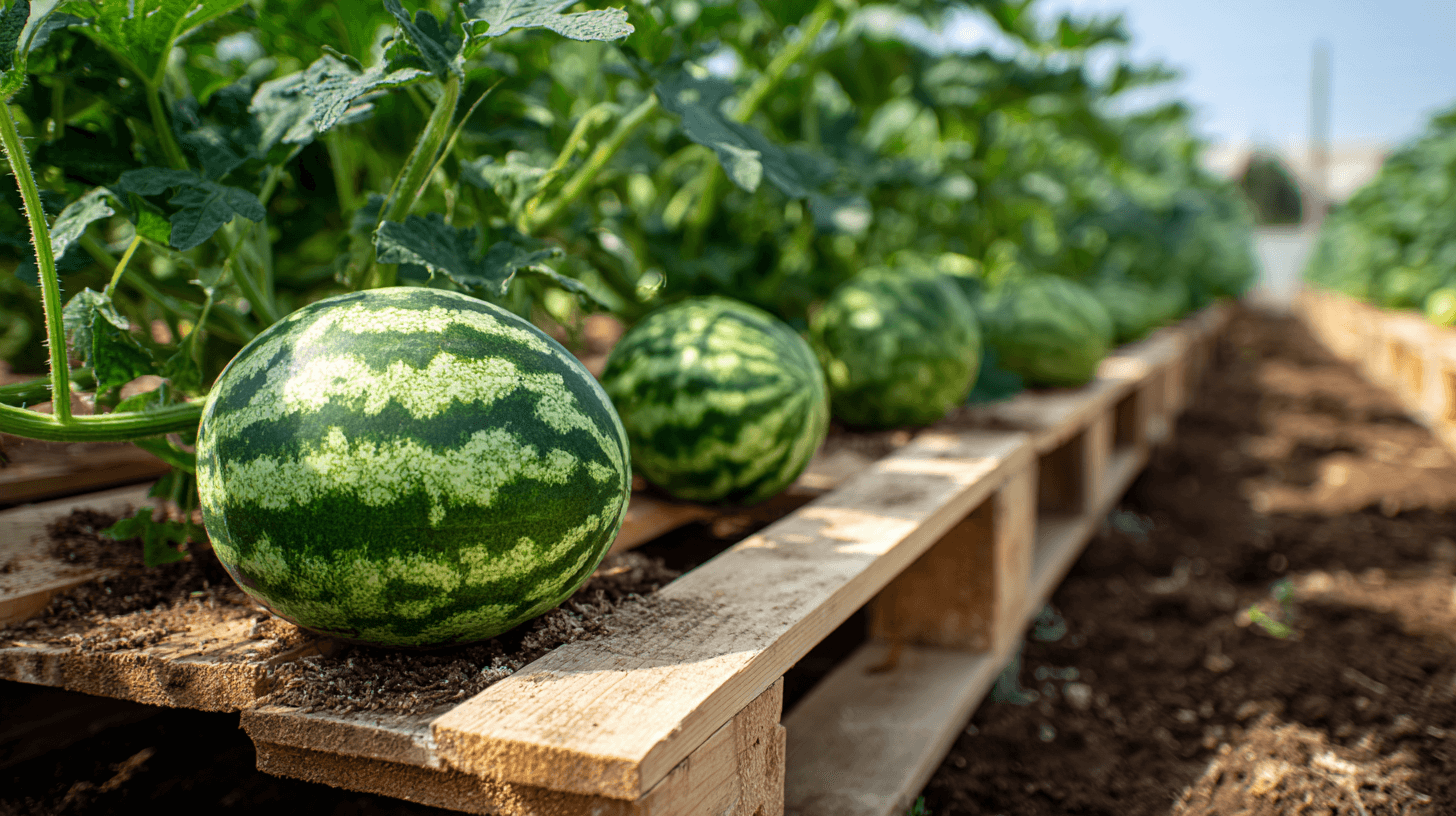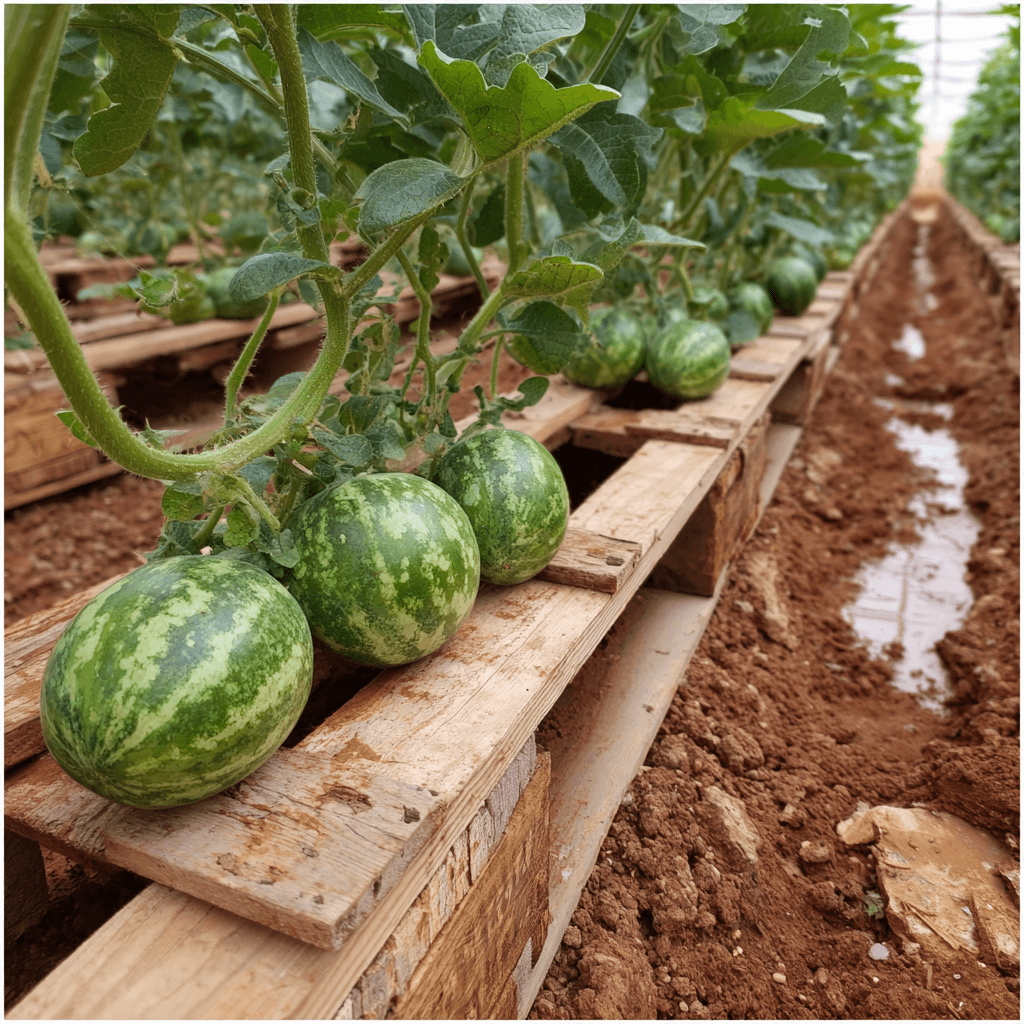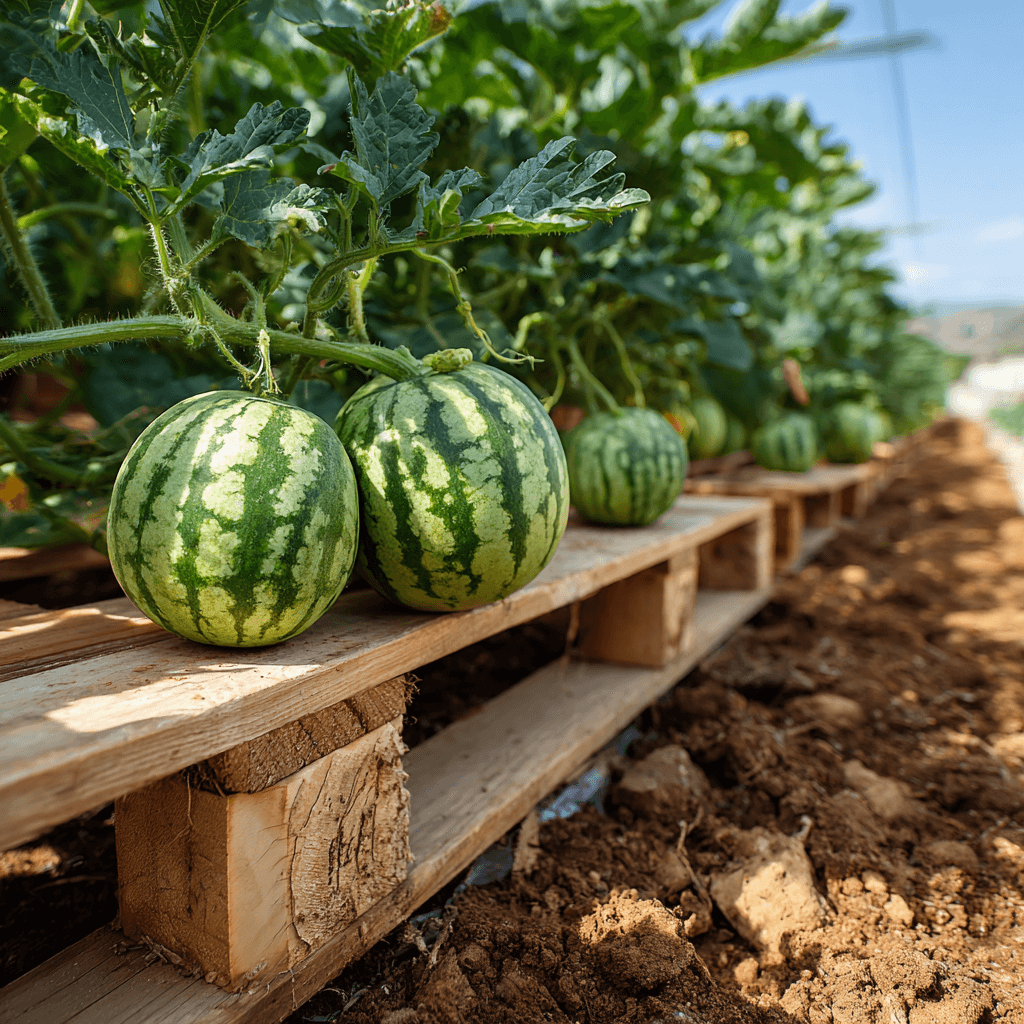
Why Growing Watermelons on Pallets Works Wonders 🍉
Watermelons love warm soil, good airflow, and plenty of sunlight. Traditionally, they grow directly on the ground, but using wooden pallets as a growing base offers several practical and protective advantages, especially in areas with heavy soil, poor drainage, or pests.

Benefits of Using Pallets for Watermelons
- Better Airflow – Elevating the vines and fruit increases air circulation, reducing the risk of mold and mildew.
- Improved Drainage – Water won’t pool around the roots, preventing rot.
- Pest Protection – Keeping fruit off the ground makes it harder for slugs, insects, and rodents to damage them.
- Warmer Soil – The air gap beneath pallets retains heat, which boosts growth.
- Even-Shaped Melons – The fruit develops without flat, discolored spots caused by ground contact.
- Space-Saving – Ideal for small gardens, patios, or urban spaces.
Step-by-Step Guide to Growing Watermelons on Pallets
1. Choose the Right Pallets
- Use untreated wood pallets (no chemicals) to ensure safety for edible plants.
- Standard size: 120×80 cm (or 48×40 inches).
2. Prepare the Location
- Pick a sunny spot (at least 6–8 hours of sunlight daily).
- Level the soil so the pallets sit flat and stable.
3. Soil Preparation
- Loosen the ground beneath the pallet.
- Mix in compost or well-rotted manure to enrich nutrients.
4. Position the Pallets
- Place them directly on the soil.
- If growing multiple plants, leave space between pallets for vine growth.
5. Planting
- Sow watermelon seeds or transplant seedlings through pallet gaps so roots can access the soil below.
- Space plants about 60–90 cm apart.
6. Watering
- Water deeply at the base, avoiding wetting leaves.
- Use mulch under pallets if needed to retain moisture.
7. Training Vines
- Guide vines so melons develop on top of the pallet slats for better support.
8. Harvesting
• • Harvest when the underside of the melon turns yellow and it gives a deep, hollow sound when tapped.

Extra Tips
- Use drip irrigation to keep roots moist without splashing leaves.
- Rotate pallets yearly to avoid soil-borne diseases.
- Pair with companion plants like marigolds to deter pests.
